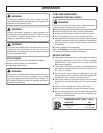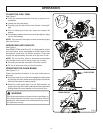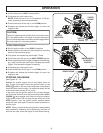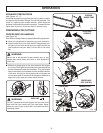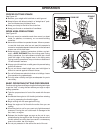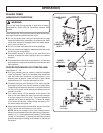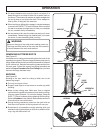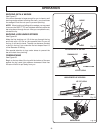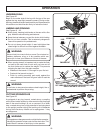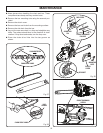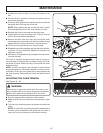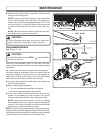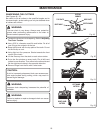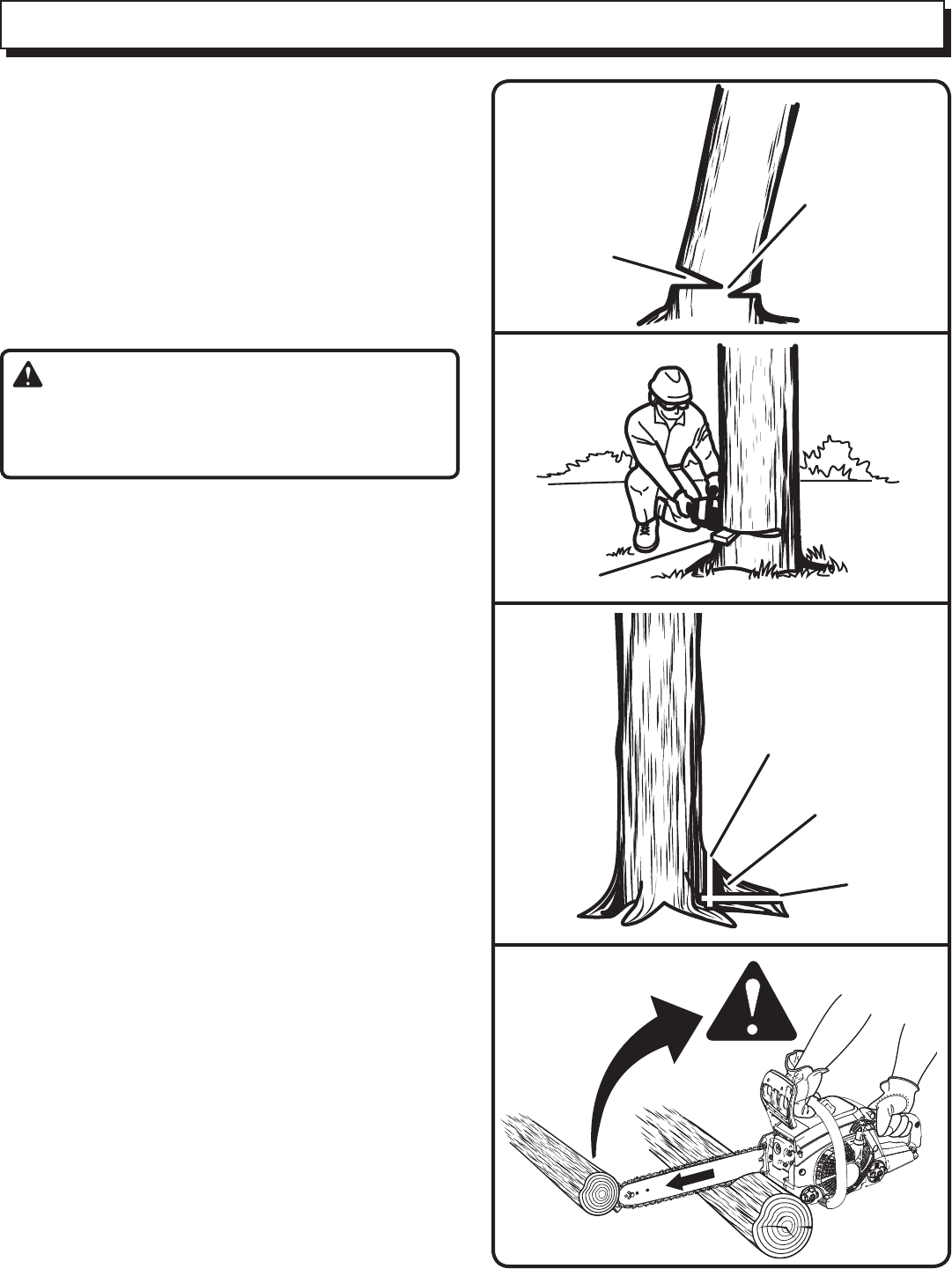
18 19
WEDGE
Fig. 24
HORIZONTAL
CUT
VERTICAL
CUT
LOOSE
SECTION
Fig. 25
KICKBACK
Fig. 26
OPERATION
n On large diameter trees, stop the back cut before it is
deep enough for the tree to either fall or settle back on
the stump. Then insert soft wooden or plastic wedges into
the cut so they do not touch the chain. Drive wedges in,
little by little, to help jack the tree over.
n When bucking or felling with a wedge, it may be necessary
to remove the SAFE-T-TIP anti-kickback device to allow
the bar to be drawn through the cut. After you complete
the cut, reinstall the tip immediately.
n As tree starts to fall, stop the chain saw and put it down
immediately. Retreat along the cleared path, but watch
the action in case something falls your way.
WARNING:
Never cut through to the notch when making a back cut.
The hinge controls the fall of the tree, this is the section
of wood between the notch and backcut.
REMOVING BUTTRESS ROOTS
See Figure 25.
A buttress root is a large root extending from the trunk of the
tree above the ground. Remove large buttress roots prior to
felling. Make the horizontal cut into the buttress first, followed
by the vertical cut. Remove the resulting loose section from
the work area. Follow the correct tree felling procedure as
stated in Proper Procedure For Tree Felling after you have
removed the large buttress roots.
BUCKING
See Figure 26.
Bucking is the term used for cutting a fallen tree to the
desired log length.
n Cut only one log at a time.
n Support small logs on a saw horse or another log while
bucking.
n Keep a clear cutting area. Make sure that no objects
can contact the guide bar nose and chain during cutting,
this can cause kickback. To avoid the danger, keep the
SAFE-T-TIP anti-kickback device attached while cutting.
Refer to Kickback in the Specific Safety Rules section of
this manual for more information.
�n During bucking operations, stand on the uphill side so
that the cut-off section of the log cannot roll over you.
�n Sometimes it is impossible to avoid pinching (with just
standard cutting techniques) or difficult to predict which
way a log will settle when cut.
HINGE
BACK CUT
Fig. 23



